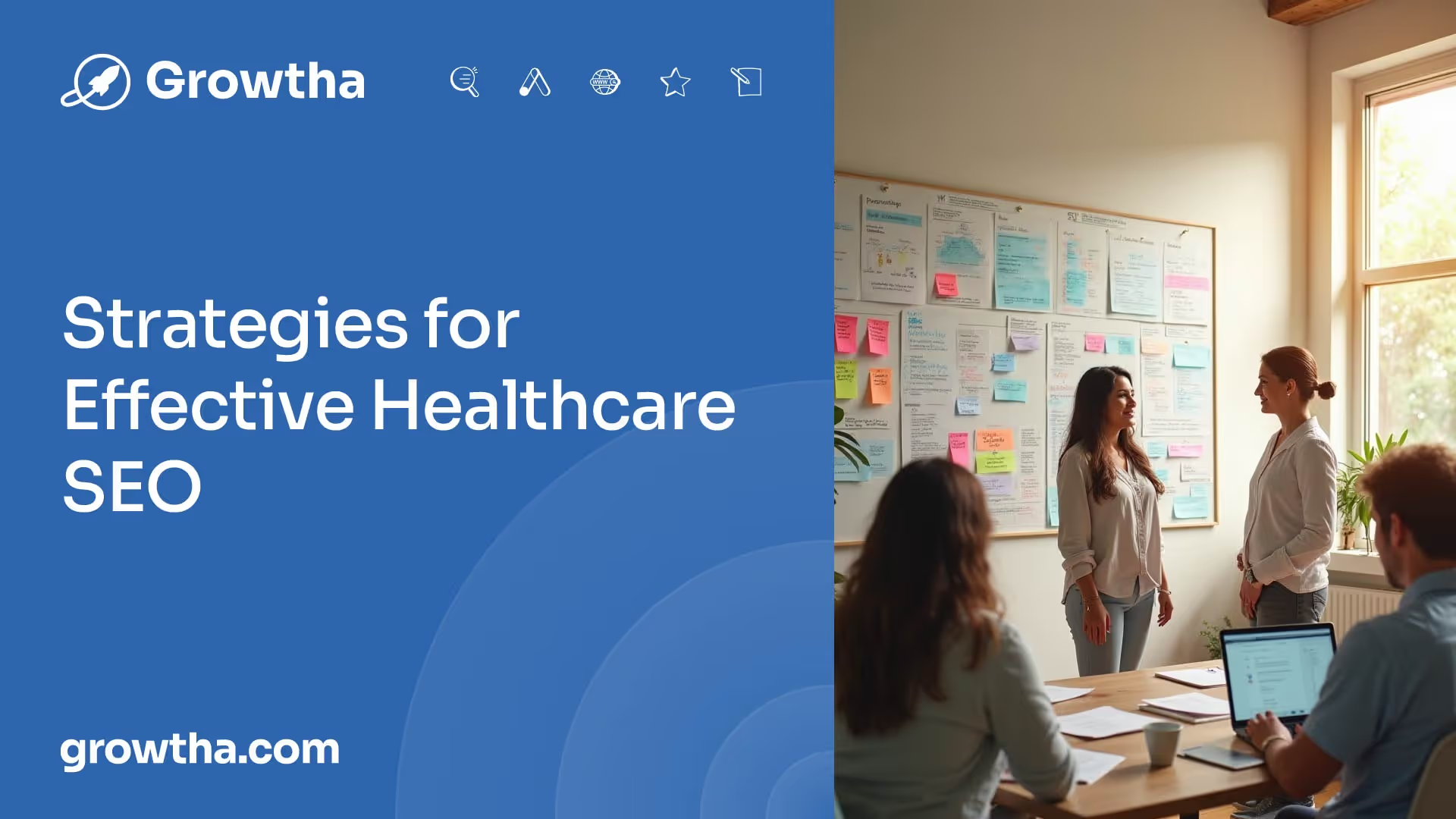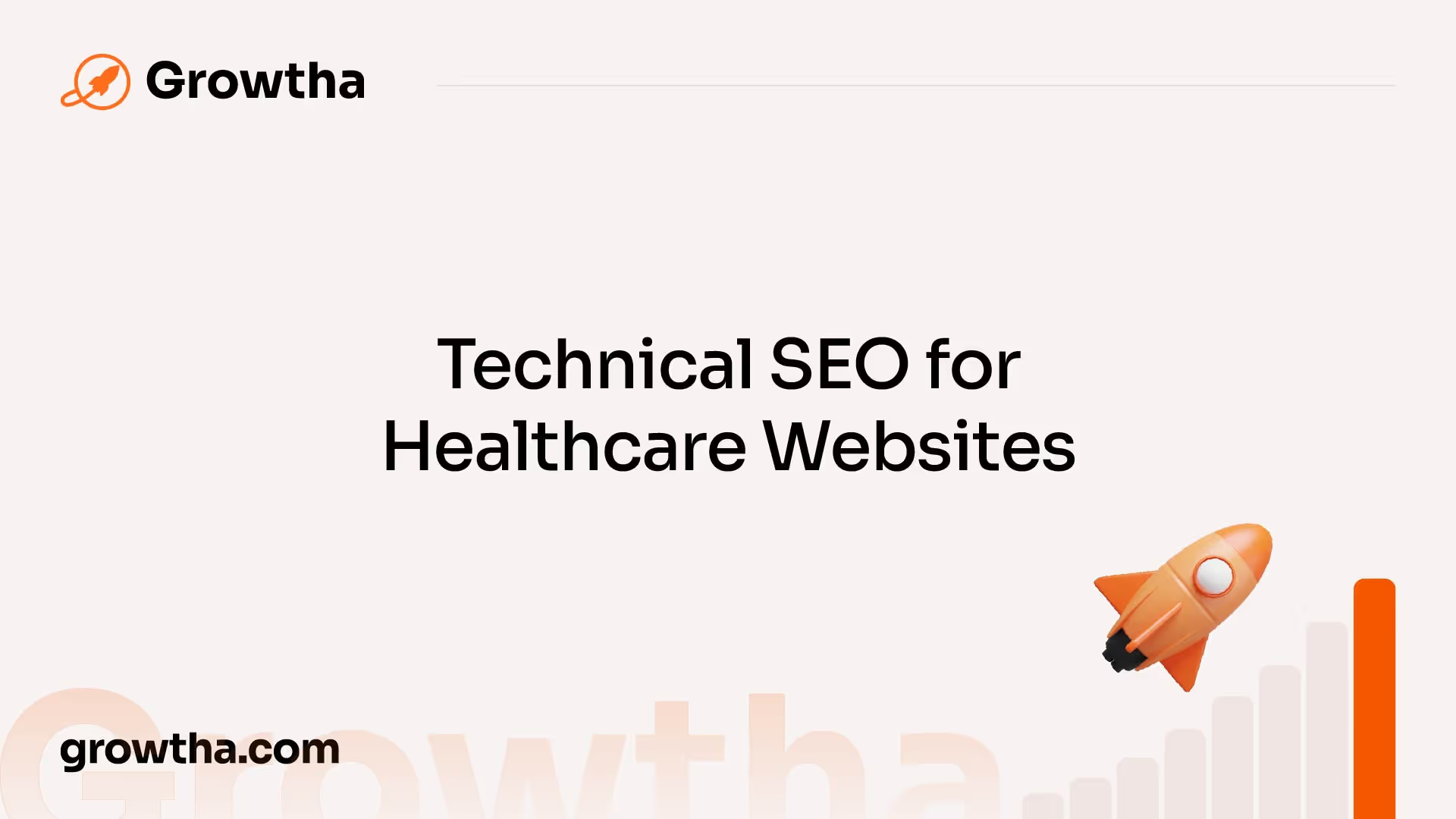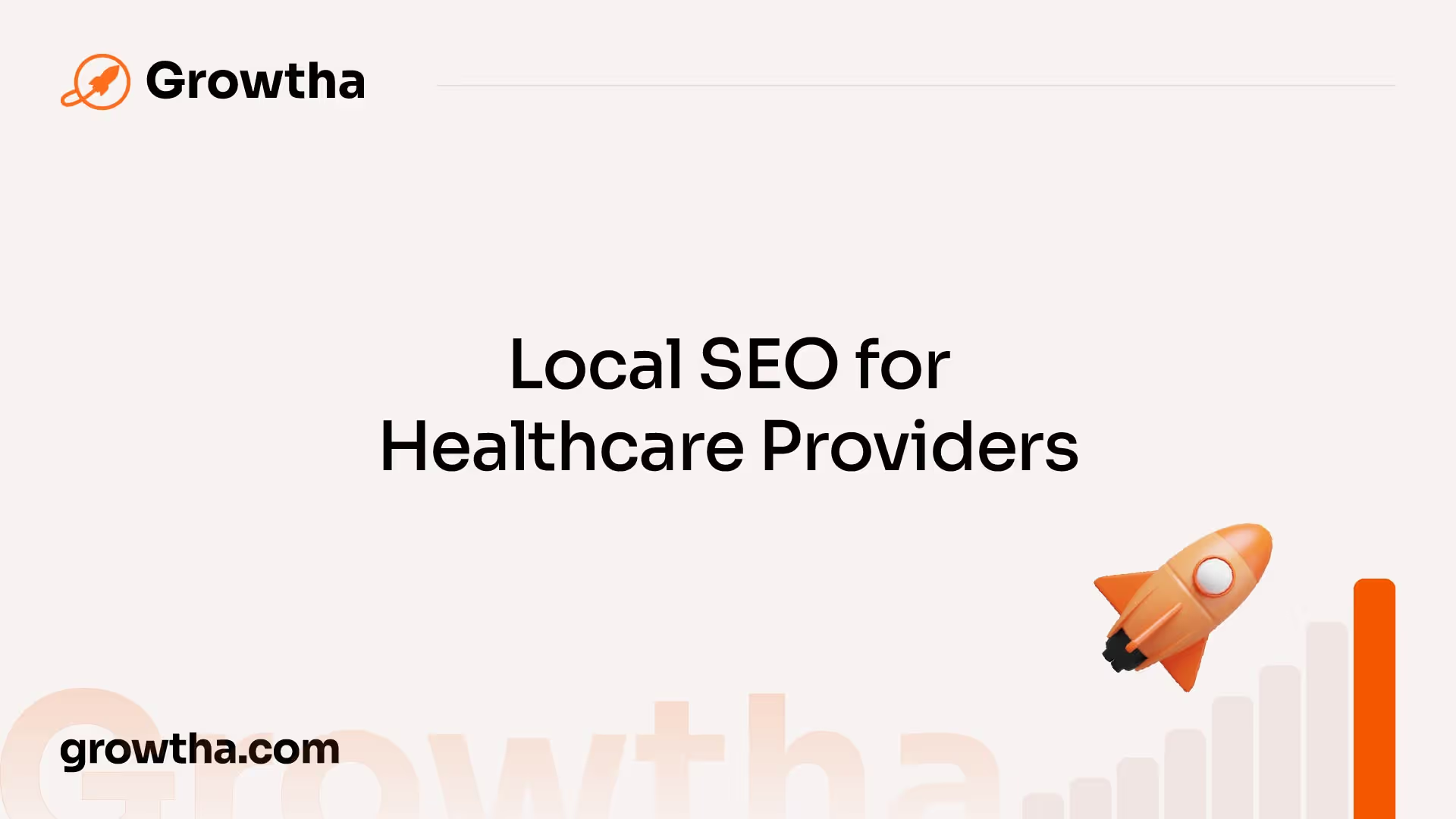Healthcare SEO Strategies for Patient Acquisition
Implementing SEO strategies is vital for hospitals and healthcare providers to ensure they don't miss out on potential patients who search for healthcare services online.


Healthcare SEO Strategies for Patient Acquisition
Importance of Healthcare SEO
In the digital age, healthcare providers recognize the significance of implementing effective SEO strategies to enhance their online presence and attract more patients. Healthcare SEO plays a crucial role in patient acquisition and improving the visibility of healthcare organizations on the internet.
Patient Acquisition through SEO

Implementing SEO strategies is vital for hospitals and healthcare providers to ensure they don't miss out on potential patients who search for healthcare services online. Patients tend to contact the top hospitals they find on search engines like Google or Bing, highlighting the importance of ranking at the top of search engine results [1]. By optimizing their websites for relevant keywords, such as "best hospital in [city]" and "emergency care in [city]," healthcare providers can attract the right patients and drive targeted traffic to their websites [1].
By focusing on healthcare SEO, providers can increase their online visibility, establish trust and credibility, and ultimately drive more patient appointments. A high-quality website with trustworthy content can enhance a healthcare organization's credibility, helping to regain any lost trust. This is crucial in today's digital landscape, where patients are increasingly turning to online platforms for healthcare information and services.
Impact of Online Visibility
Improving the online visibility of healthcare organizations through SEO efforts is vital in attracting patients. Studies have shown that 60% of American consumers use online scheduling tools to make healthcare appointments, and nearly 90% of patients search for their symptoms on Google before visiting a doctor. Therefore, ranking well in search engine results is essential for healthcare providers to be discovered by potential patients.
By implementing effective healthcare SEO strategies, providers can increase their organic search rankings, drive targeted traffic to their websites, and ultimately convert those visitors into patients. This can result in a higher number of appointments and a more successful patient acquisition process.
Understanding the importance of healthcare SEO is the first step in driving growth and attracting patients. By optimizing their online presence, healthcare providers can ensure they are visible to potential patients who are actively searching for healthcare services, leading to increased patient acquisition and improved overall success.
Strategies for Effective Healthcare SEO

To drive patient acquisition and improve online visibility, healthcare providers need to implement effective SEO strategies. This section explores three key strategies for successful healthcare SEO: keyword research, content creation, and user-friendly website design.
Keyword Research
Keyword research plays a vital role in healthcare SEO. It involves finding the right balance between broad and niche keywords to attract visitors interested in high-level topics as well as those seeking specific treatment details related to specializations. By conducting thorough keyword research, healthcare providers can identify the terms and phrases that potential patients are using to search for healthcare information and services.
It's important to target keywords that align with the specific services and expertise offered by the healthcare provider. This helps to attract relevant traffic and increase the chances of converting website visitors into patients. Additionally, incorporating location-based keywords can be beneficial for local SEO efforts.
Content Creation
Content marketing is a fundamental aspect of healthcare SEO. Producing high-quality, relevant, and valuable content allows healthcare brands to connect and engage with patients [4]. By creating patient-centric content that addresses their concerns, educates them about various health topics, and offers insights into treatments, healthcare providers can establish themselves as trusted authorities in their field.
Aligning content creation with the Google Helpful Content Update can boost search rankings and credibility with readers. This update emphasizes the importance of delivering content that meets the needs of users, providing them with answers and solutions to their healthcare queries.
User-Friendly Website Design
Creating a user-friendly website is crucial for generating leads and revenue from healthcare SEO. Investing in patient-centric web design that prioritizes the user experience can significantly impact engagement and conversion rates [4]. When patients can easily navigate a healthcare provider's website, find the information they need, and access online appointment booking or contact forms, they are more likely to take the desired action.
Some key elements of user-friendly website design include intuitive navigation, clear and concise content, mobile responsiveness, fast page load times, and visually appealing layouts. Optimizing the website's design for a positive user experience can lead to increased patient satisfaction, higher search rankings, and ultimately, more patient acquisitions.
By implementing these strategies for effective healthcare SEO, providers can enhance their online presence, attract targeted traffic, and convert website visitors into new patients. It's important to continuously monitor and adapt the SEO strategies based on performance metrics and industry trends to stay ahead in the competitive healthcare landscape.
Leveraging Content Marketing for SEO

In healthcare SEO, content marketing plays a crucial role in connecting and engaging with patients. By creating high-quality, relevant, and valuable content, healthcare brands can establish themselves as trusted sources of information. This not only improves search rankings but also builds credibility and strengthens relationships with patients.
Engaging Patients through Content
Producing patient-centric content is essential in healthcare SEO. Patients often turn to their doctors for information about new treatment options, with 43% of U.S. consumers seeking guidance from healthcare professionals [2]. By creating informative and educational content that addresses their needs and concerns, healthcare organizations can empower patients to take charge of their health outcomes. This can include articles, blog posts, videos, infographics, and more.
A comprehensive healthcare marketing strategy should focus on delivering content that is trustworthy, accurate, and easy to understand. By providing valuable insights and answering common questions, healthcare brands can build trust and establish themselves as go-to resources for health information. In fact, 76% of consumers still trust their doctors the most for health information [2]. By leveraging content marketing, healthcare organizations can strengthen this trust and forge stronger bonds with their community.
Google's Helpful Content Update
Aligning content with Google's Helpful Content Update is vital for healthcare SEO. This update emphasizes the importance of high-quality, reliable, and authoritative content in search rankings [4]. To optimize content for this update, healthcare brands should focus on:
- Providing accurate and up-to-date information: Ensuring that the content reflects the latest medical research and guidelines can enhance credibility and trust.
- Creating comprehensive content: Developing content that covers a wide range of topics and offers in-depth insights can help healthcare organizations become authoritative sources in their respective fields.
- Using patient-friendly language: Simplifying complex medical jargon and using language that is accessible to patients can improve the user experience and make the content more engaging.
- Incorporating multimedia elements: Including visuals, such as images, infographics, and videos, can enhance the content's appeal and make it more shareable.
By aligning with Google's guidelines and creating content that meets the needs of patients, healthcare organizations can boost their visibility in search rankings and drive patient acquisition.
Content marketing is a cost-effective strategy, as it costs 62% less than traditional marketing strategies while generating three times as many leads [2]. By investing in content creation and optimization, healthcare brands can enhance their online presence, establish credibility, and attract more patients to their services.
Technical SEO for Healthcare Websites

When it comes to healthcare SEO, optimizing the technical aspects of a website is essential to improve organic search visibility and enhance relevance and quality for specific search terms. Technical SEO practices focus on improving crawlability, indexability, and site speed. By implementing these strategies, healthcare providers can enhance their online presence and attract more patients.
Crawlability and Indexability
Improving website crawlability and indexability is a fundamental aspect of technical SEO for healthcare websites. This optimization helps search engines effectively navigate and understand the website's content, leading to improved organic search visibility. Here are some key considerations:
- XML Sitemap: Creating and submitting an XML sitemap to search engines helps them discover and index the important pages of your website. This ensures that your healthcare content is accessible and visible to potential patients.
- Robots.txt: Properly configuring the robots.txt file allows you to control the crawling and indexing behavior of search engine bots. By specifying which pages to allow or disallow, you can ensure that sensitive or duplicate content is not indexed.
- URL Structure: Optimizing the structure of your healthcare website's URLs is crucial for search engine crawlers. Using descriptive and keyword-rich URLs helps search engines understand the content of your pages, improving their visibility in search results.
Site Speed Optimization
Site speed optimization is another critical component of technical SEO for healthcare websites. A fast-loading website not only improves user experience but also positively impacts search engine rankings. Search engines prioritize websites that provide a seamless browsing experience. Here are some strategies to optimize site speed:
- Image Compression: Compressing images without compromising quality can significantly reduce page load times. Use image compression tools or plugins to optimize your healthcare website's images and improve overall performance.
- Caching: Implementing caching mechanisms, such as browser caching and server-side caching, can store static files and data temporarily. This reduces the time it takes to retrieve information, resulting in faster page load times.
- Minification: Minifying HTML, CSS, and JavaScript files by removing unnecessary characters, spaces, and line breaks can reduce file sizes and improve website speed. Use minification tools or plugins to automatically optimize your healthcare website's code.
- Hosting Provider: Choosing a reliable hosting provider with fast server response times and sufficient bandwidth is crucial for site speed optimization. Opt for a hosting plan that can handle the expected traffic and provides optimal performance for your healthcare website.
Implementing these technical SEO strategies for healthcare websites can lead to improved organic search visibility, increased user engagement, and ultimately, more patient acquisition. By prioritizing crawlability, indexability, and site speed, healthcare providers can ensure that their online presence aligns with the needs and expectations of their target audience.
Local SEO for Healthcare Providers

When it comes to healthcare SEO, incorporating local search engine optimization strategies is essential for healthcare providers to effectively target patients in their area and enhance visibility among potential patients searching for healthcare services locally. By optimizing their online presence for local searches, healthcare providers can drive more traffic to their websites and attract patients within proximity.
Optimizing for Local Searches
To optimize for local searches, healthcare providers should focus on the following key strategies:
- Google My Business Listing: Creating and optimizing a Google My Business (GMB) listing is crucial for local SEO. It allows healthcare providers to manage their online presence, ensuring accurate and up-to-date information is displayed when potential patients search for their services. This includes details such as contact information, address, business hours, and reviews.
- Local Keywords: Incorporating local keywords within website content and metadata helps search engines understand the geographical relevance of a healthcare provider's services. This improves the chances of appearing in local search results when potential patients search for healthcare services in their area.
- NAP Consistency: Ensuring consistency in the Name, Address, and Phone Number (NAP) information across all online directories, listings, and the healthcare provider's website is crucial for local SEO. Consistent NAP information helps search engines understand the legitimacy and relevance of the business, improving local search rankings.
Enhancing Visibility in Local Results
To enhance visibility in local search results, healthcare providers should consider the following strategies:
- Online Reviews: Encouraging patients to leave positive reviews on platforms such as Google, Yelp, and healthcare-specific review sites can greatly impact local SEO. Positive reviews not only improve the healthcare provider's online reputation but also act as a local ranking signal, boosting visibility in local search results.
- Local Content: Creating localized content that addresses specific healthcare needs and concerns in the provider's area can help attract local patients. This can include blog posts, articles, and resources that focus on health topics relevant to the local community.
- Social Media Engagement: Actively engaging with patients through social media platforms can help healthcare providers build trust and foster relationships. By sharing relevant content, responding to patient inquiries, and showcasing the expertise of the healthcare team, providers can enhance their visibility and connect with potential patients in the local community.
By implementing these local SEO strategies, healthcare providers can maximize their online visibility in their target geographic area, attract more local patients, and drive growth for their practice.
Measuring Healthcare SEO Success
To gauge the effectiveness of healthcare SEO strategies, it's important to focus on key performance indicators (KPIs) and utilize monitoring and analytics tools. By tracking these metrics, healthcare providers can assess the impact of their SEO efforts and make data-driven decisions to optimize their online presence.
Key Performance Indicators
When measuring healthcare SEO success, several KPIs provide valuable insights into the performance of a website and its organic search visibility. These KPIs include:
- Organic Traffic: This metric measures the number of visitors who land on a website through organic search results. Increasing organic traffic indicates improved visibility and the ability to attract potential patients.
- Keyword Rankings: Monitoring keyword rankings allows healthcare providers to assess their search engine performance for specific terms relevant to their services or specialties. Higher rankings for targeted keywords indicate improved visibility in search results.
- Website Engagement Metrics: Analyzing engagement metrics such as bounce rate, time on page, and pages per session provides insights into how visitors interact with the website. Higher engagement metrics indicate that visitors find the content valuable and relevant.
- Online Appointment Conversion Rates: Tracking the conversion rate of online appointment requests or inquiries helps measure the success of healthcare SEO in driving patient acquisition. An increase in conversion rates signifies an improvement in lead generation and patient acquisition.
Tools for Monitoring and Analytics
To effectively measure healthcare SEO success, it is essential to utilize monitoring and analytics tools. Two key tools for this purpose are:
- Google Analytics: Google Analytics provides in-depth insights into website performance, including traffic sources, user behavior, and conversion metrics. It allows healthcare providers to track KPIs, set goals, and analyze data to make informed decisions about their SEO strategies.
- Google Search Console: Google Search Console provides valuable information about a website's presence in Google search results. It offers data on search impressions, click-through rates, and website indexing. It also highlights any potential issues that may affect a website's performance in search results.
By leveraging these tools, healthcare providers can gain a comprehensive understanding of their SEO performance and identify areas for improvement. Regular monitoring and analysis of KPIs enable them to refine their strategies and enhance their online visibility, ultimately driving patient acquisition and practice growth.
Measuring healthcare SEO success through KPIs and utilizing monitoring and analytics tools is crucial for optimizing strategies and refining online visibility. By staying informed about their website's performance, healthcare providers can continuously adapt and improve their SEO efforts to attract and engage potential patients.
References
[1]: https://seo.ai/blog/seo-for-hospitals
[2]: https://kanopi.com/blog/healthcare-content-marketing/
[3]: https://www.datadab.com/blog/advanced-seo-strategies-for-healthcare-providers/
[4]: https://www.cardinaldigitalmarketing.com/healthcare-resources/blog/seo-guide-fundamentals-for-growth/







